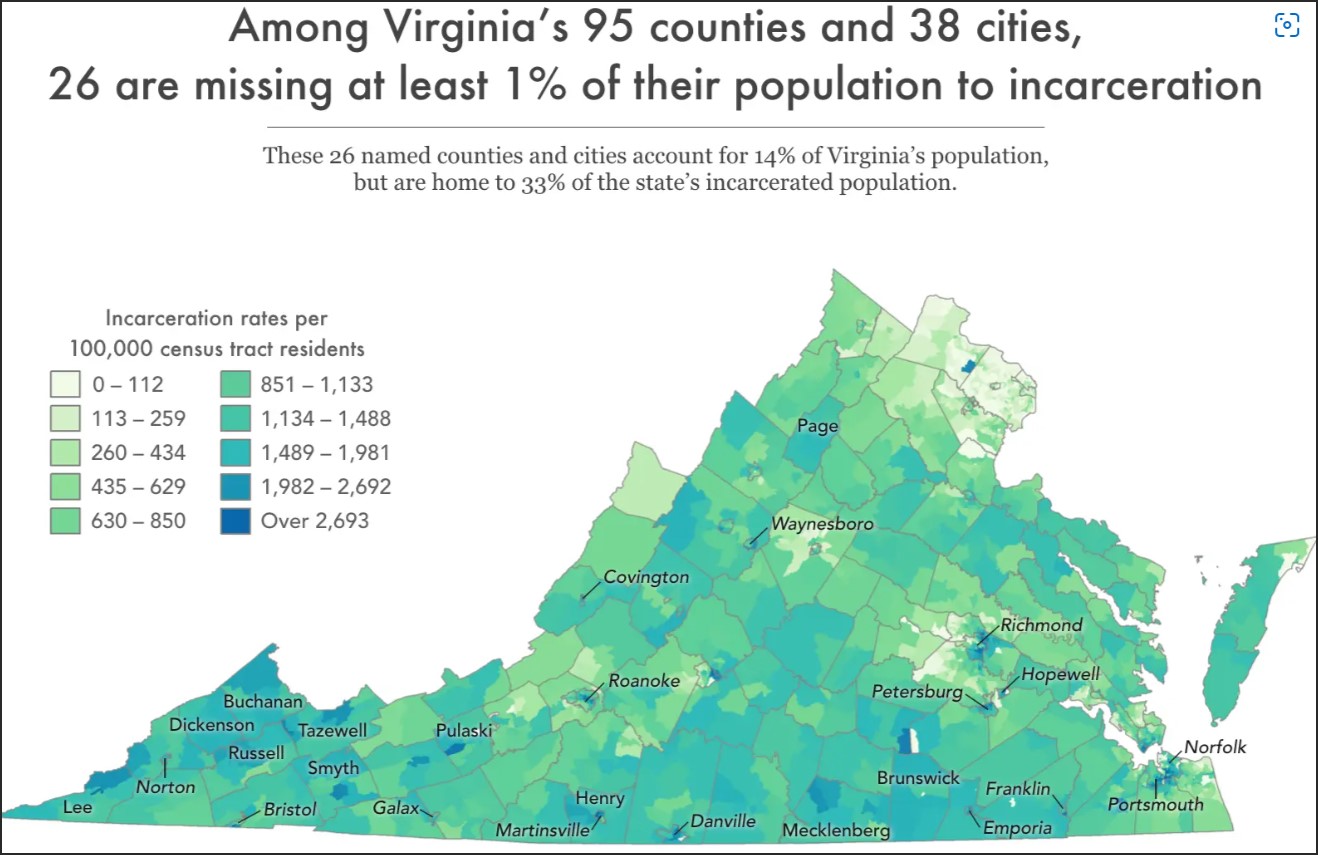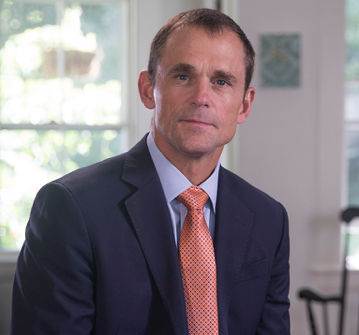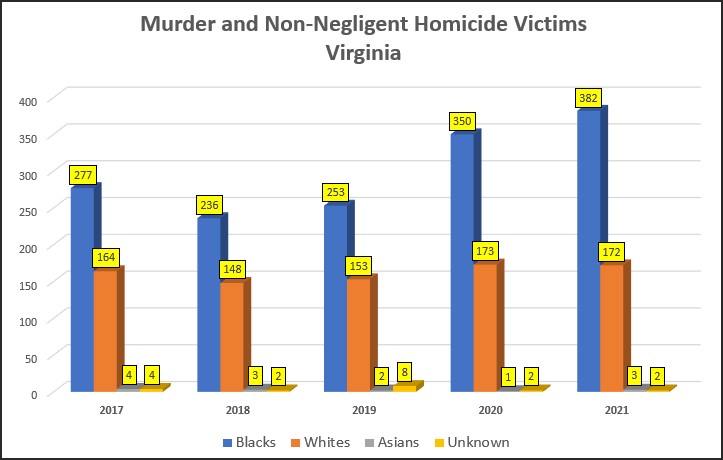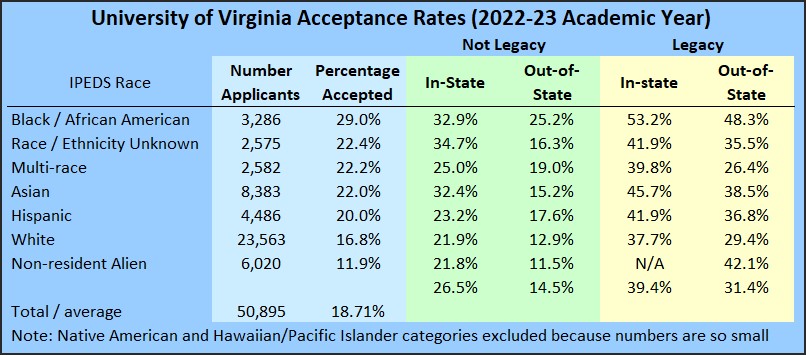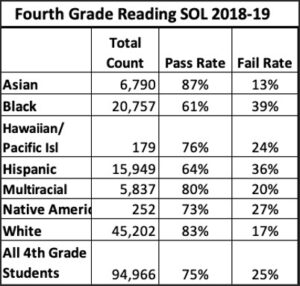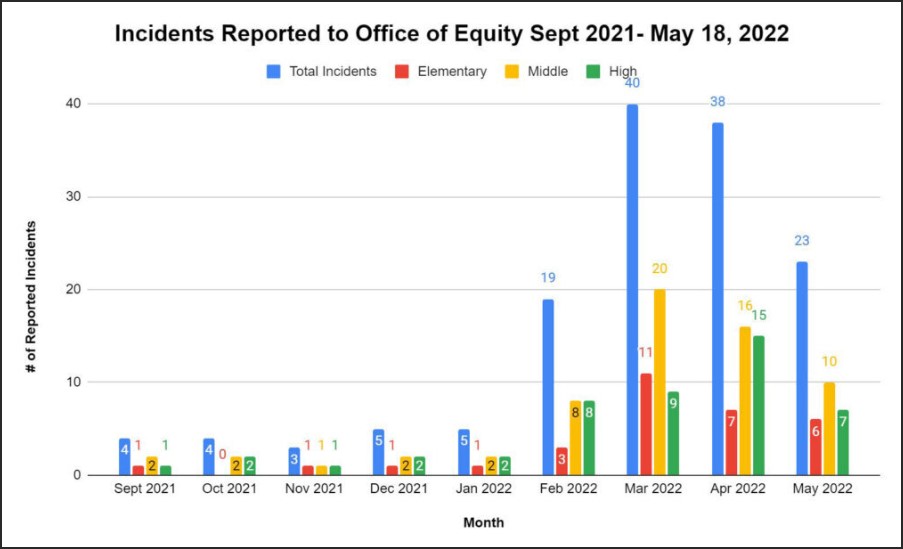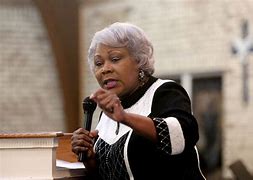by James A. Bacon
The Prison Policy Initiative, a group dedicated to exposing “the broader harm of mass criminalization,” has published data detailing the incarceration rate of communities across Virginia. Among Virginia’s 95 counties and 38 cities, 26 are missing at least 1% of their population to incarceration, finds “The geography of mass incarceration in Virginia.”
Among the more notable findings: while the cities of Norfolk and Richmond send the largest numbers of people to prison, less populous localities — Martinsville, Petersburg, Franklin, Buchanan, Lee, Dickenson and Brunswick — are missing a larger share of their populations. Moreover, within localities incarceration rates differ widely by neighborhood.
The data is interesting and potentially useful, but the analysis that accompanies it is atrocious. If the numbers prove anything, it’s that “mass incarceration” knows no racial boundaries. The poverty-ridden Appalachian counties of Lee, Buchanan and Dickenson are overwhelmingly White. But the authors slight that obvious fact in favor of linking incarceration with “systemic racism.”
This passage is typical: “Decades of systematic oppression and divestment from these poorer communities of color — which we know are overpoliced — have left these historically redlined communities particularly vulnerable to Virginia’s modern-day reliance on mass incarceration.”
Where do I begin? Continue reading

